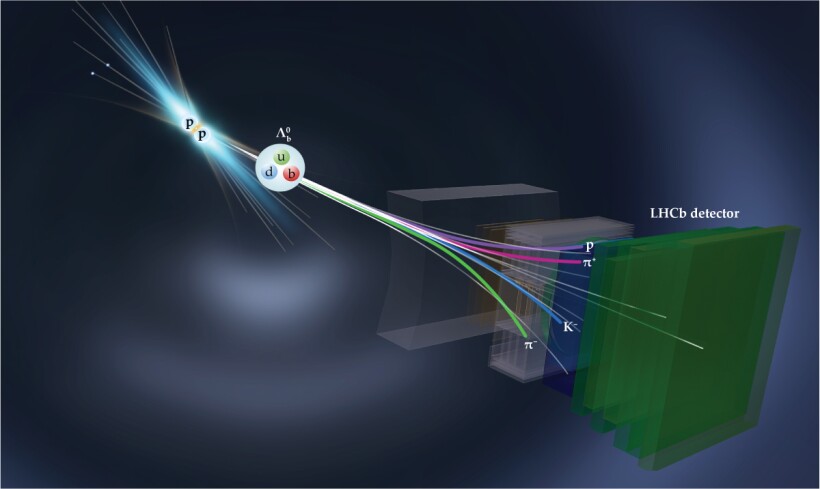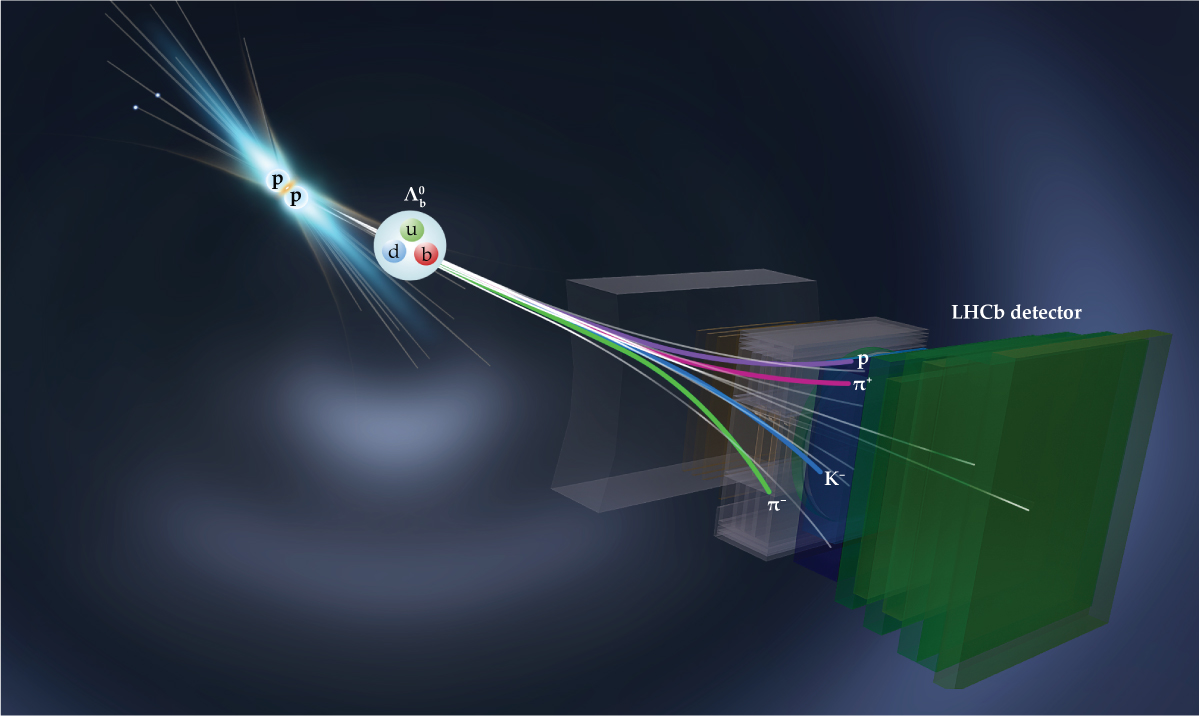Matter–antimatter asymmetry is observed in baryon decay
DOI: 10.1063/pt.uxkz.fqxe
Why is there matter in the universe? Matter and antimatter annihilate one another, and according to theory, equal amounts of each were produced in the Big Bang. If matter and antimatter exhibited perfectly symmetric and opposite behavior, everything would have been annihilated, and we wouldn’t live in the matter-filled universe we see today. Somehow, for every billion matter–antimatter pairs that annihilated in the early universe, one particle of matter survived. The source of that asymmetry, though, is yet to be fully understood. Now, the Large Hadron Collider beauty (LHCb) collaboration at CERN has made the first observation of asymmetry in the decay rate of a baryon—a subatomic particle made of three quarks—and that of its antibaryon counterpart.
The first measurement of matter–antimatter asymmetry—specifically, the violation of CP, charge conjugation and parity, symmetry—in particle decays came in 1964 by James Cronin and Val Fitch. That detection and subsequent ones involved the decay of mesons, short-lived particles made up of a quark and an antiquark (see Physics Today, August 2019, page 14
As its name suggests, the LHCb experiment was specifically designed to measure beauty (also known as bottom) quarks, which are known contributors to CP violation in meson decays (see Physics Today, September 2001, page 19

Proton–proton collisions at the Large Hadron Collider beauty (LHCb) experiment produce the beauty baryon shown here, composed of an up quark, down quark, and beauty (also known as bottom) quark. Measurements of the decay of that baryon and its antimatter counterpart have produced the first observation of CP, charge conjugation and parity, violation in particles composed of three quarks. (Image adapted from LHCb Collaboration, Nature 643, 1223, 2025

It took tens of thousands of decay events, measured during two LHC runs (at 7–8 TeV from 2011–12 and at 13 TeV from 2015–18), to home in on a reliable measure of CP violation in the baryons. Baryons and antibaryons are produced at slightly different rates, and the rate difference was corrected for in the analysis. Because the detector is made of matter, it also has a higher detection efficiency, which was accounted for as well, for matter than for antimatter. The researchers found that the beauty baryon decay rate was higher than that of its antibaryon counterpart: The relative difference of about 2.5% agrees with, and provides a more precise number than, existing theory.
Don Lincoln, a senior scientist at Fermilab and member of the Compact Muon Solenoid (CMS) collaboration, says he expects that researchers at other CERN experiments, such as CMS or ATLAS, will look to their own data to validate the result. Though the latest observation hasn’t solved the mystery of matter–antimatter asymmetry, it does offer clues for where to look. Another next step will be to focus on intermediate processes in the baryon decay chain for which the observed CP violation is even greater, as high as 5.4%, than it is for the entire decay chain. (LHCb Collaboration, Nature 643, 1223, 2025
This article was originally published online on 26 August 2025.

